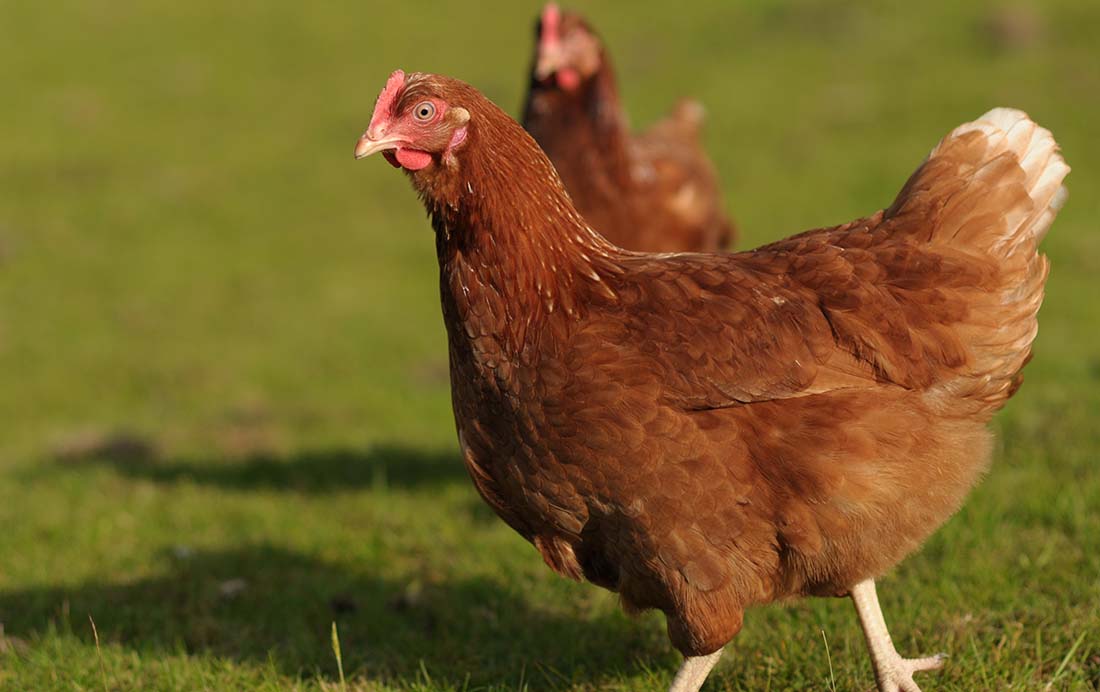By Traci Badalucco and Christina Bucciere
Illinois zoos are taking measures to protect their flocks from potential avian flu infection as the virus wipes out millions of hens across the Midwest.
Illinois, which neighbors Iowa where 27 million birds have caught the virus, is on alert for signs of avian flu. That includes keeping an eye on bird populations in the zoos.
People can’t catch the flu but can expose birds to the disease if they have had contact with infected animals or carry droppings on shoes.
Keepers at Lincoln Park Zoo in Chicago are taking extra precautions to wear protective gear around its nearly 260 birds, said Sharon Dewar, spokesperson for the Lincoln Park Zoo.
The chickens and owls in the Farm in the Zoo are off public display and were moved to indoor housing areas indefinitely until the risk of exposure has cleared, Dewar said.
Cosley Zoo in Wheaton has ramped up its efforts to prevent infection since the outbreak by increasing the use of disinfecting foot baths and staying alert to the changing situation.
“We have an emergency preparedness team that is made up of myself and education and zoo staff that make sure protocol is up to date and communicating with the Association of Zoos and Aquariums and keeping communications open and knowing what is going on,” said Susan Wahlgren, the zoo’s director.
The flu has affected flocks in much of the Midwest and infected 40 percent of Iowa’s hens, said Dustin VandeHoef, communications director at the Iowa Department of Agriculture.
As of Wednesday, more than 27 million Iowa birds are infected on 53 sites across the state, and all of them will need to be killed, VandeHoef said.
About 14.5 million egg-laying hens, nearly 1 million turkeys and 672,000 pullets—hens raised to become layers—have already been killed in Iowa, according to the Iowa Department of Agriculture.
Avian influenza, or “bird flu,” is a virus that infects domestic poultry. The H5N2 strain is affecting many other states, including Minnesota and Wisconsin, South Dakota and Kansas.
Experts believe the H5N2 strain is being spread by the droppings of wild birds, such as geese or ducks, migrating across the U.S., said Dr. Kyoung-Jin Yoon, a veterinarian and professor at Iowa State University.
Humans can unknowingly spread the droppings by tracking them through farms or trucks and cars whose wheels pick it up.
The virus may even be carried in an aerosol from the droppings as birds migrate, and in the warmer months when farmers open cage windows for better circulation, the birds could be more exposed, Yoon said.
The virus can cause low energy, diarrhea, sneezing, runny nose, purple discoloration of the legs, decreased egg production and sudden death in infected birds, according to the USDA.
“There were reports of them checking on birds that evening and finding a significant number dead the next morning,” said Dr. Mark Ernst, Illinois’ state veterinarian. “Certainly in a large flock, in a period of a few days you can have a significant number of birds dying.”
Because of the virus’ rapid spread, Illinois is keeping a close watch on its farm flocks as well.
The Illinois Department of Agriculture said the largest production facilities use strict biosecurity measures and screen the birds year-round, monitoring who goes in and out of the facilities and making sure to clean and disinfect.
“It’s a continual monitoring process,” Ernst said. “Even before the outbreak started, if we have a sick flock, we’d be going in to see what was causing it.”
Since the outbreak, commercial farms are moving backyard flocks, normally left outside, indoors and kept away from waterfowl to prevent contamination, and setting up trailers outside facilities where delivery workers shower before entering the premises, the department said.
The Cosley Zoo, as well as zoos in Indiana and Missouri, participated in Zoo Ready, an initiative funded by the U.S. Department of Agriculture Animal Care to help zoos respond to outbreaks and disasters.
“We knew that there is always a potential. We are very well prepared,” Wahlgren said.
Zoo Ready helps zoos identify weaknesses in their preparedness plans, said Yvonee Nadler, a cofounder of Zoo Ready and program manager at the Association of Zoos and Aquariums.
Zoo workers are asked to complete online questionnaires, such as whether the zoo has identified quarantine zones should animals become sick.
“We can protect our collections only so much, because we can’t put a bubble over the top of our facilities,” Nadler said.
Zoos across the nation are increasing measures to prevent contamination and spread of the illness, like implementing foot baths to prevent the pathogen from spreading and changing disinfectant frequently, but measures differ between every institution, Nadler said.
“In some instances, depending on species, zoos across the country have elected to leave certain birds indoors until warmer summer months when birds settle down and start raising birds of their own,” Nadler said. “They aren’t migrating and carrying the virus in and out.”
Wahlgren said while zoo and farm industries track the virus’ spread, sharing information and helping each other is essential in this ever-changing situation.

